About the Film
A haunting portrait of a threatened ecosystem
and those who care deeply for it
In the vast rainforest homelands of the Heiltsuk (located in Great Bear Rainforest), extractive industries have exploited the land, breaking the fragile links that connect thousands of species within their complex adaptive systems of interactions. Now the salmon are in peril.
Indigenous leaders, university researchers, and the filmmaker explore the intersecting complementarities between traditional knowledge and western science. The film portrays the stunning beauty of north coastal landscapes and some of the communities living at the terrestrial margin of the Pacific Ocean. These landscapes have been harvested with fervor and long-lasting impacts on the species dependent on healthy forests. Salmon are unique in their life history transiting the terrestrial-oceanic interface and signaling their struggle for survival.
Watch an Excerpt
Festivals & Awards
- Nominated for Best Short Documentary, Hawaiian International Film Festival (HIFF)
- Official Selection, Seattle Film Festival
- Official Selection, 34th International First Peoples Festival (Présence Autochtone)
- Patagonia Vancouver Screening
Synopsis
The Salmon Forest Project film paints a haunting portrait of a threatened ecosystem and those who care deeply for it.
In the vast rainforest homelands of the Heiltsuk (located in the Great Bear Rainforest), extractive industries have exploited the land, breaking the fragile links that connect thousands of species within their complex adaptive systems of interactions. Now the salmon are in peril.
Brought together with a common purpose, a disparate group of people, from Indigenous leaders and elders, university researchers, and the filmmaker, explore the intersecting complementarities between traditional knowledge and western science. These extraordinary people are united by their connection to the forest and advocacy for protecting the integrity of ecosystem functions to support healthy forests and recovering salmon populations.
The film features insights from UBC Faculty of Forestry experts Dr. Teresa Ryan (Sm’hayetsk, Tsm’syen) and internationally celebrated author Dr. Suzanne Simard, and forestry consultant Dr. Allen Larocque.
In this visually charged story, magnificent bears lead us to the waters where the salmon spawn. In their subsequent death after spawning, the salmon create a cycle that spreads nutrients throughout the forest via underground mycorrhizal networks, sustaining a diverse array of plant and animal life.
In bearing witness to the timeless rhythm of life in this ethereal landscape, the film offers a profound meditation on what the salmon nations of the Pacific Northwest have known for millennia – that everything in this world is connected, and maintaining those connections is essential to life itself.
Ultimately The Salmon Forest Project film is a stunning cinematic testament of the connections in nature and the reciprocal impact of severing those connections. By exploring the complementarities of these knowledge systems, the film offers a glimmer of hope that changes in extractive practices could facilitate healing those broken linkages to restore salmon.
Details
Director: Bill Heath
Producers: Bill Heath, Robyn Simard, Dr. Teresa Ryan
Writer: Bill Heath
Cinematographer: Bill Heath
Run time: 27 Minutes
The Filmmaker
Bill Heath
Since picking up a spring-wound Bolex movie camera, award winning filmmaker Bill Heath has been rolling for over 40 years. At the age of 22, Heath landed his first paid job as director/cinematographer with US based Warren Miller Productions. This was a time before “extreme” was a thing. Bill traveled the globe for over 10 years filming adventure sports, like skiing, surfing and climbing.
Soon after, commercial production houses took note of Heath’s ability to tell a story with a camera, which launched him into new adventures in commercial production. Clients like BC Tourism, Mercedes Benz, Wrigley’s, Heart & Stroke Foundation were hiring Bill to shoot and direct adverts. High end commercial production experience allowed Heath to join the Director’s Guild as well as the International Cinematographers Guild. These alliances let Bill into a desirable sect of Studio feature film production. As second unit director, Bill contributed to films for major studios, like MGM, Disney and Lionsgate. This was mostly hazardous, stunt-driven action, so Bill moved back to documentary production, where he started working with Dr. Suzanne Simard and her Mother Tree Project.
For the last ten years, Bill has been collaborating with Simard and her team creating films that document the good work of knowing and protecting our forests and nature. Bill lives in Nelson, BC with his 40 year partner, a squirrel and three blue jays.
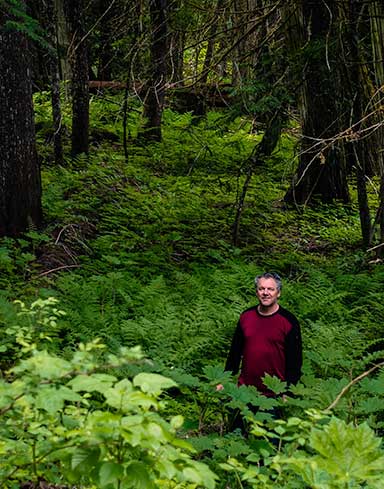
Meet the Subjects
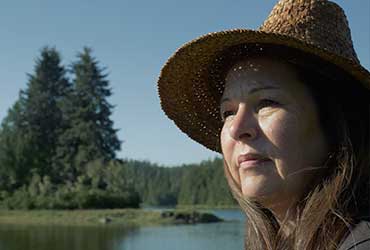
Dr. Teresa Ryan (Sm’hayetsk)
Sm’hayetsk Teresa Ryan, PhD., (Tsm’syen) is Indigenous Knowledge and Natural Science Lecturer at UBC Forestry and First Nations Liaison on the Mother Tree Project. For her dissertation she examined colonial dispossession of Aboriginal lands and trade by exploring ecological-social institution linkages and the connection of these complex adaptive systems to heterogeneous mosaic landscapes. She demonstrated how thousands of years of stewardship based on Ancestral knowledge of cyclic resource production and variability was an intuitive component of sustainable use and Aboriginal economy. Her current Salmon-forest research investigates the potential to restore salmon abundance, including the use of ancient Aboriginal fishing technology and strategies. She is a Scientist on the Pacific Salmon Commission Chinook Technical Committee (Canada). Dr. Ryan is also a traditional Tsm’syen weaver.
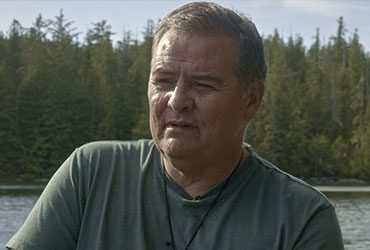
Frank Brown
Frank Brown, a Hereditary Chief of the Heiltsuk Nation in Bella Bella, holds the name λáλíya̓ sila, meaning “preparing for the largest potlatch.” He is an adjunct professor at Simon Fraser University and Vancouver Island University (VIU) and a senior advisor to the Pacific Institute for Climate Solutions. As founding director of the Heiltsuk Integrated Resource Management Department, he led land and marine stewardship for the Coastal First Nations–Great Bear Initiative and co-developed Indigenous ecotourism and stewardship training programs with VIU and North Island College. A leader in Indigenous canoe resurgence, he organized Tribal Journeys to Bella Bella in 1993 and 2014 and co-curated the Sacred Journey exhibits. With his wife, Kathy, he co-owns SeeQuest Development and YuWala Marine Charters.
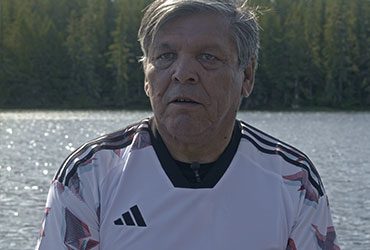
Kelly Brown
Kelly Brown is a prominent leader and director of the Heiltsuk Integrated Resource Management Department (HIRMD) in Bella Bella, British Columbia. He integrates traditional Heiltsuk knowledge and values into modern resource management and conservation strategies. Under his leadership, HIRMD has developed innovative practices, including Memorandums of Understanding (MOUs) with industry partners to align resource extraction with Heiltsuk priorities. His work focuses on protecting vital ecological areas, like watersheds, and species such as Pacific herring, essential to the environment and Heiltsuk cultural well-being. Brown emphasizes community-driven processes, ensuring consultation and collaboration guide sustainable management. Memorably, he advanced a halt to industrial herring fisheries to protect stocks and establish agreements that promoted peace with the Haida.

Vera Newman
Bio coming soon
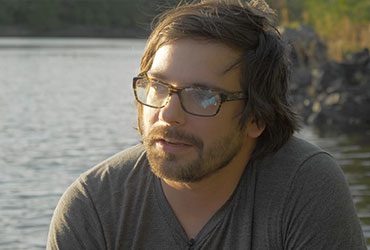
Dr. Allen Larocque
Dr. Allen Larocque is a forest ecologist and forester working in British Columbia, Canada. Allen has a deep interest in complex systems thinking and how it can be used to solve the world’s problems. He completed his PhD with the Simard lab at the UBC Faculty of Forestry where he studied forest soil microbiomes, mycorrhizal networks, and forest nutrient cycling. He recently finished a postdoctoral research fellowship with the Mother Tree Network. He currently works for the Canadian Forest Service.
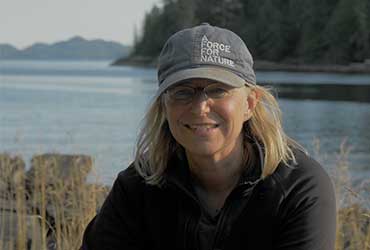
Dr. Suzanne Simard
Suzanne Simard is a Professor of Forest Ecology at the University of British Columbia. She is the leader of the Mother Tree Research Project and the author of the book, Finding the Mother Tree. Suzanne is known for her work on how trees interact using below-ground fungal networks, which has led to the recognition that forests have hub trees, or Mother Trees. Her current research investigates how these complex relationships contribute to forest resiliency and has far-reaching implications for how to manage and heal forests from human impacts, including climate change.
Simard has published over 200 peer-reviewed papers and shared her findings globally through conferences, documentaries, and her TEDTalk “How trees talk to one another”.
